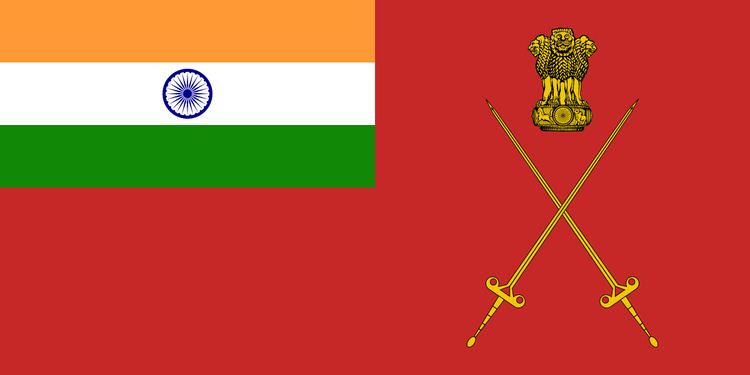Active 1949 - Present Type Foot Guards | Branch Army Role Mechanized Infantry | |
 | ||
The Brigade of The Guards is an infantry regiment of the Indian Army. It was the first "all India", "all class" infantry regiment of the Army where troops from all parts of India serve together, as opposed to other regiments that recruit from specific regions, ethnic groups or religions. The Brigade of Guards was raised to implement the government's policy of encouraging Army recruitment from classes and regions which had been under-represented in the forces. Raised as The Guards Brigade, the old system of class composition was replaced with recruitment open to all regions, castes, creeds, and sections of society. Three of the Army's oldest and most distinguished battalions — 2nd battalion 2nd Punjab Regiment, 1st battalion Indian Grenadiers Regiment and 1st battalion 6th Rajputana Rifles were converted as Guards battalions in 1949. Later, they were joined by the 1st battalion Rajput Regiment. It is the only regiment of foot guards in the Indian Army. Though the Brigade of The Guards is only 50 years old, its constituent battalions go back as far as 225 years and between them share 93 battle honours earned around the globe. The President of India is the Honorary Colonel-in-Chief and the Chief of Army Staff is the Colonel-in-Chief of The Guards. The Guards Regimental Centre is at Kamptee in Maharashtra.
Contents
History and raising
Prior to the raising of the Guards, Indian Army infantry regiments derived their name from region, religion or sub-caste. There was a message with its formation that the country comes before everything else, including religion and caste. The regiment was formed in 1949 as the first mixed class Indian regiment to be raised after Indian independence by Field Marshal KM Cariappa OBE. The first battalions of the Brigade of Guards were formed by taking the oldest battalions of some of the infantry regiments in the Indian Army. Currently the Brigade of the Guards consists of 19 regular battalions and 2 territorial battalions. In the 1980s, the Indian Army began to increase the number of mechanized infantry battalions on its order of battle. As part of this program, the battalions of the Brigade of Guards were eventually converted to mechanized infantry.
1971 Liberation War
In the 1971 war, the Brigade of the Guards participated in actions on both the Eastern and the Western fronts. The 14th Guards earned their first PVC ( Param Vir Chakra) through L/Nk Albert Ekka of Bravo Company, for heroism in the Gangasagar theatre: he single-handedly turned the tide against Pakistani defenders firing downrange with LMG's and MMG's from the top of a fortified structure, putting the entire operation in jeopardy.
Operation Blue Star
The 10th Battalion under Lt. Col. Ishrar Rahim Khan was located in Jullundhar in 1984 and moved to Amritsar to assist the civil administration when Sikh militants were discovered holed up inside the Golden Temple. Along with 1 Para Commando, 10 Guards moved in from the North Entrance to the temple and, though suffering heavy casualties, achieved their objectives. The unit was awarded one Ashok Chakra (Capt Jasbir Singh Raina), one Kirti Chakra and three Shaurya Chakras. Total casualties suffered by the unit was 19 killed and 50 wounded.
UN operations and counter-insurgency operations
The Brigade of the Guards has also taken part in UN peace keeping operations in Gaza and Angola. The regiment has also been used in counter-insurgency operations in India.
Regimental Battalions
The regiment currently consists of a total of 21 battalions. The majority of these operate as mechanized infantry, three operate in the reconnaissance and support role (in support of the border force), one is equipped as an anti-tank guided missile (ATGM) battalion and three (including two territorial army battalions) remain as infantry. Today, the regiment is one of three in the Indian Army that is made up of men from the different castes and regions of India.
Gallantry Awards
2 Param Vir Chakras, 2 Ashoka Chakras, 1 Padma Bhushan, 8 Param Vishisht Seva Medals, 6 Maha Vir Chakras, 4 Kirti Chakras, 46 Vir Chakras, 18 Shaurya Chakras, 77 Sena Medals, 10 Ati Vishisht Seva Medals, 3 Yudh Seva Medals, 16 Vishisht Seva Medals, 45 Mention-in-Despatches, 151 COAS's Commendation Cards and 79 GOC-in-C's Commendation Cards
Pre-Independence
Delhi 1803; Egypt 1876-1917; British East Africa 1878; Afghanistan 1878–80; Kandahar 1880; Burma 1891; China 1900; East Africa 1914-1916; Mesopotamia 1914- 1918, Egypt 1915, Gallipoli 1915, France and Flanders 1915, Kutal Amarah 1915; Palestine 1916-1918; Tigris 1916; Macedonia 1918; Afghanistan 1919; Donbaik 1943; Italy 1943–45; Burma 1945; J&.K 1947-1948; Selinghar; Carnatic; Mysore; Ava; Pegu; Suez Canal; Nels, Krithia; Laos; Aden; Point-551; Kanghaw; Naushera; Mangalore; Hyderabad; Gaza; Megiodo; Nablus; Curais; Seringapatnam; Beurabone; Punjab; Mooltan; Persia; Reshire; Khooshab; Central India; Basra; Shaiba; Ctesiphon; Defence of Kut-Al-Amara; Sidi Barrani; Keren; Cassino; Castele Hill; Leswarree; Deig; Bharatpore; Khelat; Mahrakpore; Chilianwallah; Goojerat and Punjab.
Post-Independence
Akhaura, Burki, Gadra Road, Hilli, Naushera, Gurais, Shingo Rivel Valley, Sylhet and Ganga Sagar.
